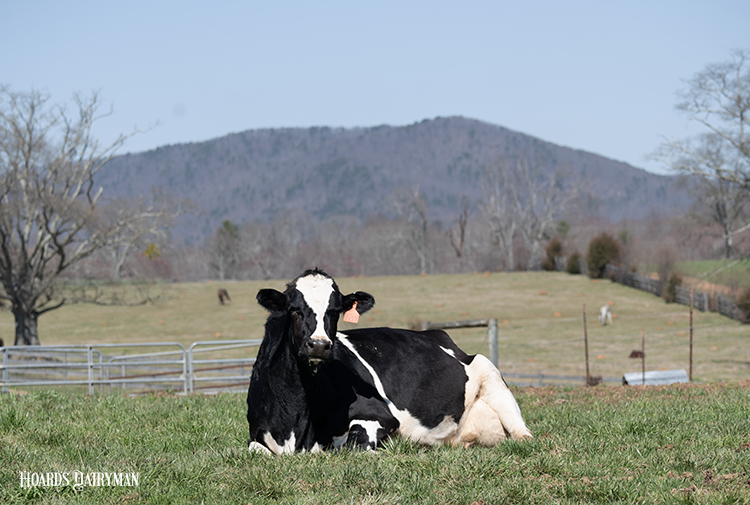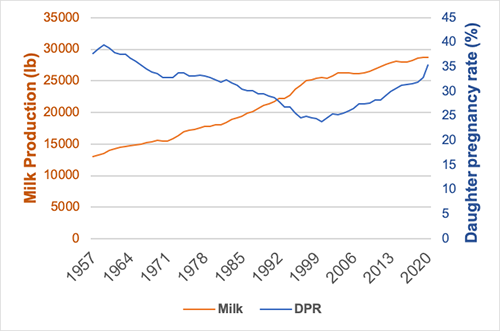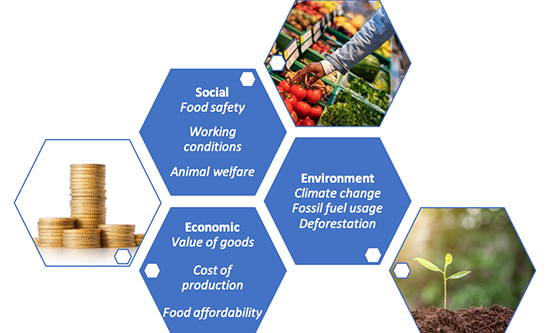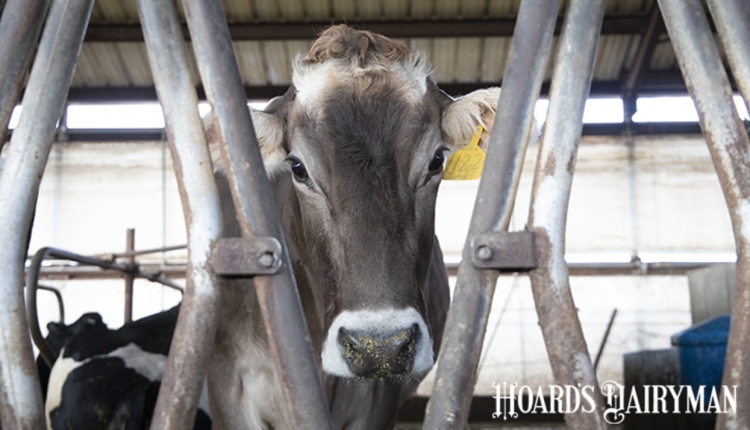
Genetic improvement has been a highly effective strategy to enhance dairy efficiency and net profitability. Genetic selection is also a key to improve dairy sustainability. Continued genetic emphasis on cow health, fertility, and feed efficiency helps lower the carbon footprint of U.S. dairy, supporting industry stewardship goals like Net Zero by 2050.
Productivity and efficiency gains
There is no question the dairy industry has made incredible gains in production efficiency. Modern dairy cows produce four times more milk than their counterparts from 1945. This means fewer animals are required to meet consumer demand. With a smaller population of more productive cows, U.S. dairy is using less land, less water, and fewer natural resources. It also means fewer replacement animals are needed. All these reductions have lowered the greenhouse gas (GHG) emissions per unit of production.
A combination of management and genetic improvements have driven this positive development. Overall, intense genetic selection has contributed to at least half of the productivity gains, as reported by João Dürr and Duane Norman in a recent Hoard’s Dairyman article.
Sustainability goes beyond efficiency, and U.S. genetic selection programs of the past 30 years have also expanded beyond productivity. When the Lifetime Net Merit selection index was introduced in 1994, the U.S. was one of the first countries to include selection for fitness and health traits. This included productive life (PL) and somatic cell score (SCS). Reducing SCS through genetic selection also improves animal welfare, minimizes antibiotic usage, reduces involuntary culling, and even lowers GHG emissions. With a reduction of 200,000 in the bulk tank somatic cell count (SCC), there is a 3% reduction in GHG emissions because of reduced milk losses, involuntary culling, and other variable costs (Özkan Gülzari et al., 2018).
Improved fertility reduces methane emissions
The U.S. has selected for improved fertility with genetic evaluations for daughter pregnancy rate (DPR) since 2003, as well as cow and heifer conception rate evaluations introduced in 2014. Despite the negative correlation between production and fertility, current genetic trends are favorable for both. It has been estimated that an improvement in pregnancy rate from 19% to 25% reduces total herd methane by 10% and equates to a $49 per cow per year improvement in profitability ("Herd health may bolster sustainability"). Improving conception rate and estrus detection also helps to reduce total herd methane output (Garnsworthy, 2004).

Healthier cows lower carbon footprint
Animal welfare is a key component of stewardship. In recent years, several new genetic evaluations relate to animal welfare, including cow livability, disease resistance, and heifer livability.
CDCB cow livability evaluations account for those animals dying on the farm, resulting in $1,200 less income compared to culled animals sold for beef. These cows that die on the farm also result in increased emissions of 463 kilograms of CO2-equivalents per ton of fat-and-protein-corrected milk (Mostert et al., 2018).
Genetic evaluations for direct health traits are published by CDCB for Holstein, Jersey, and Brown Swiss animals. The impacts of disease are well known, spanning from reduced production and fertility to additional antibiotic usage and reduced consumer trust. Health disorders also bring sustainability implications. Cows with clinical mastitis have a 6.2% higher carbon footprint per unit of milk compared to healthy contemporaries, due to reduced milk production, discarded milk, prolonged calving interval, and involuntary culling (Mostert et al., 2019). Metritis, displaced abomasum, lameness and ketosis have similar impacts, all resulting in a higher carbon footprint relative to healthy cows as shown in the table below.

Average increase of greenhouse gas emissions (kg CO2e/t FPCM) per case of subclinical ketosis (SCK) only, SCK with other diseases including mastitis (MAST), metritis (METR), displaced abomasum (DA), or lameness (LAME), and ketosis (KETO) only. Additional emissions result from several impacts of disease such as reduced milk production and discarded milk.
Our work is not done
Genetic improvement results in permanent and cumulative advancement. If we consider this improvement from a sustainability perspective, genetic selection for the diverse range of traits available have resulted in more efficient cows and more sustainable dairy production.
However, our progress must continue. There will be more people worldwide to feed in the future, and farmers are expected to use fewer resources. We can create even more sustainable dairy cows through improvement of the Feed Saved trait launched in 2020 and development of new traits, such as one that measures methane emissions.
Dairy cattle production is currently estimated at 1.9% to 2.5% of the annual U.S. GHG emissions, the majority of which is enteric methane. Net energy loss from enteric methane ranges from 2% to 12% of a cow’s total intake. Genetic selection for low methane emitters can reduce total GHG emissions and identify those animals that are capable of more efficient production.
For dairy products to remain competitive in the market, we will need to reach a new level of efficiency and stewardship. Genetic selection will be one of the tools to achieve those new levels.

Sustainability has three aspects, all of which must be considered: environment, social, and economic. Examples from each of those aspects are listed above.
For the deep dive
Further detail about genetic selection and sustainability was presented at the 2022 CDCB Industry Meeting on October 5 in Madison, Wis. Watch the presentation recordings on CDCB YouTube.








